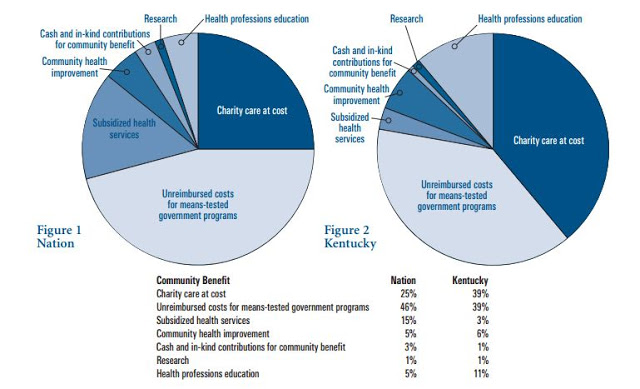Report says hospitals could fund improvements in Ky.’s health

“Right now, in Kentucky, most of the money that is spent in health is for healthcare and services,” Dr. Richard Heine, executive director of the Friedell Committee and author of the report, said in a news release. “Very little money is available to address population health and wellness, which would lead to healthier people.”
The report, “Hospital Community Benefits and the Health of Kentucky,” says that while many Kentucky nonprofit hospitals are already partnering with local health departments to create a community health needs assessment and addressing community needs, there is room for more collaboration between community leaders and their local hospitals to find ways to use these funds toward improving their communities health.
 |
| Figure 1 has 2009 national data. Figure 2 has 2011-12 Kentucky data. (Friedell Committee graphic) |
Almost 10 percent of the annual $9 billion operating budgets of Kentucky’s non-profit hospitals, or $877 million, goes toward community benefits.
More than 80 percent of that is used to cover bad debts or care that wasn’t reimbursed. Only 5 percent goes to “community health improvement services and community benefit operations,” according to the report.
The report ponders that there might be more dollars available for community needs and improvement of population health because the expansion of Medicaid has reduced the amount of uncompensated care.
“With some portion of the more
than $877 million in community benefit funds available, Kentucky
nonprofit hospitals are in a position to stimulate significant changes in
the reach and efficacy of preventive health programs, health policy, and
with collaboration and cooperation of the people they serve, much
progress can be expected,” the report says.
“This partnership can be powerful and important in creating positive change,” Heine said in the release. “These funds present a possible means to finance community health initiatives, which typically do not have a designated funding source.”